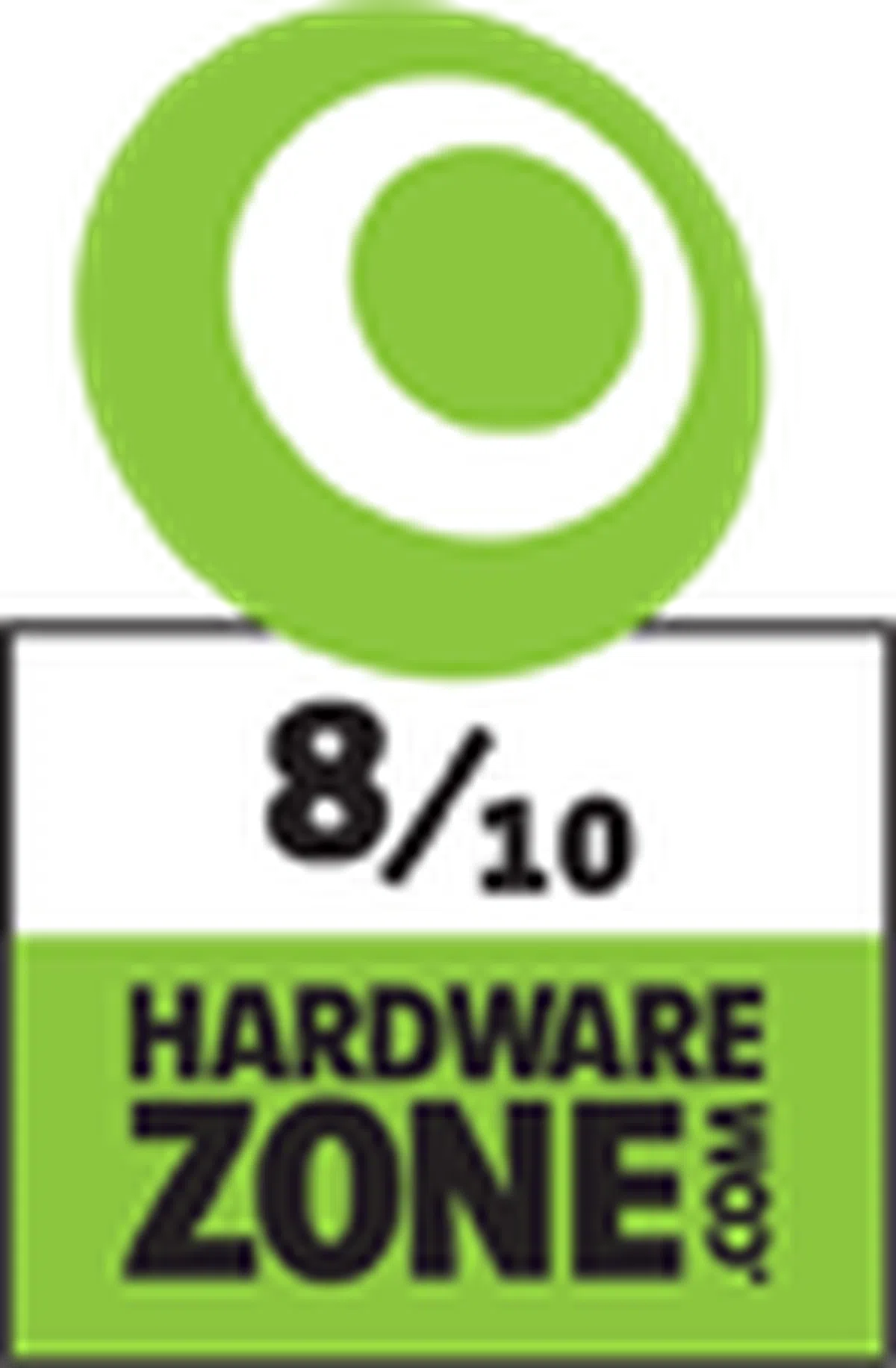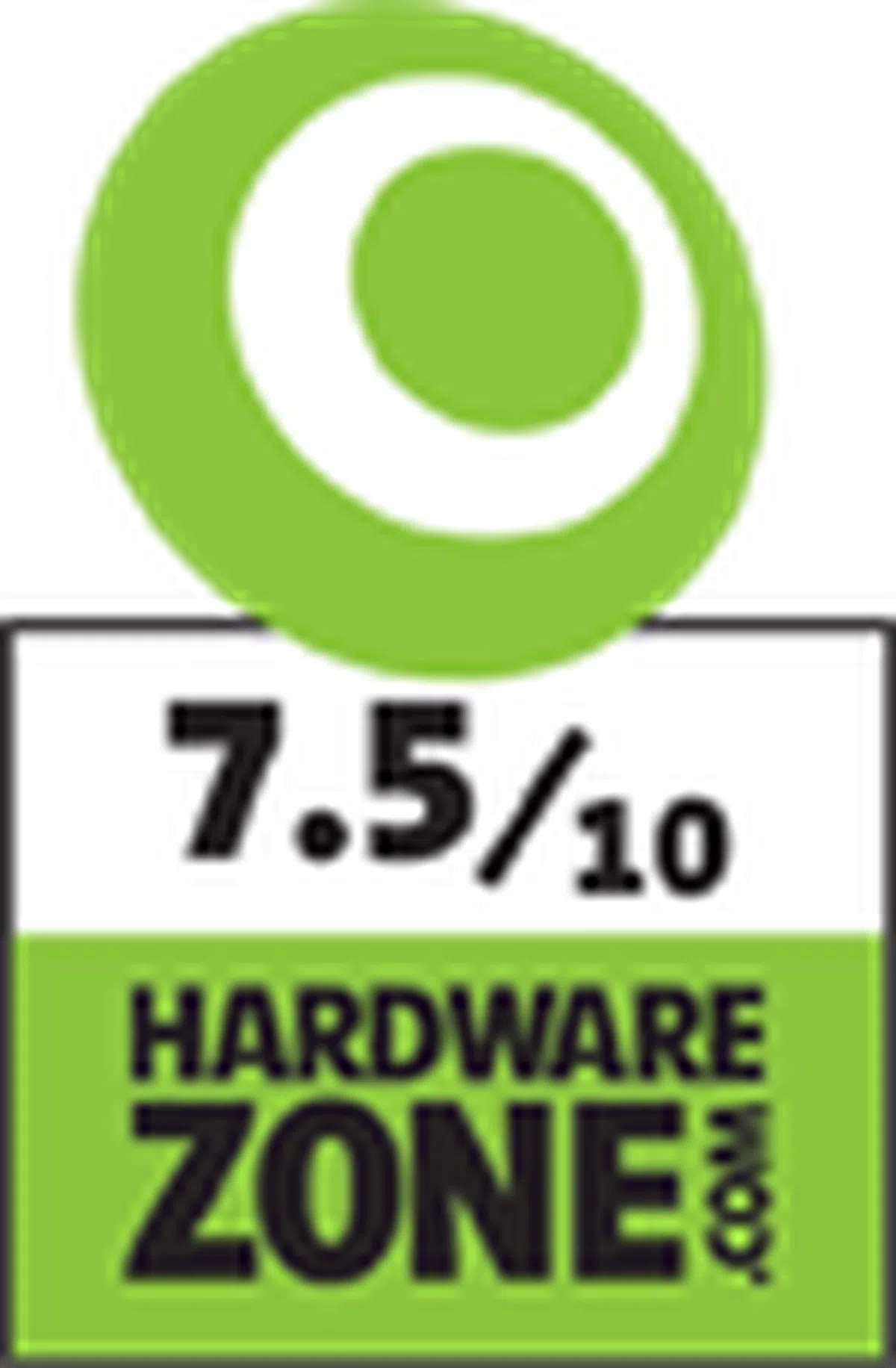The flyweight championships: 13.3-inch ultrabook shootout
What are the most important considerations when selecting an ultrabook? As it turns out, things like design, portability, and performance go a long way toward determining a winner. In this article, we take a look at ultrabooks from the likes of Acer, ASUS, Dell, HP, and Lenovo to determine which rules the roost.
Note: This article was first published on 17th March 2016.

Faster, lighter, and sleeker
Now that Intel’s sixth-generation Skylake processors are out, manufacturers have begun to roll out the latest convertibles and ultrabooks packed with the latest hardware in full force. Thanks to Skylake’s improved power efficiency, this means faster machines that last for even longer, all wrapped up in slimmer and more attractive packages than before. This also means that the playing field is remarkably similar, with the vast majority of ultrabooks sporting the same processors and similar memory and storage configurations. How's one to choose the right ultrabook in such an undifferentiated market? Ultimately, it all comes down to factors like size, weight, and portability, and also value-added features like a touchscreen display or the ability to switch to tablet mode on the go.
Let's start off with something from Acer.
Acer Aspire R13 (Intel Core i7-6500U)

The Acer Aspire R13 is one of two convertibles in this shootout.
The 13.3-inch Acer Aspire R13 is quite a nondescript convertible notebook. It is a fairly thick dark gray slab, and the display and back of the lid are covered by sheets of Corning Gorilla Glass 3, more commonly found on smaller devices like mobile phones and tablets.
In practical use, the Corning Gorilla Glass 3 display should mean that you have to worry less about scratches, but we think Acer could have dispensed with the glass covering on the lid. We found that this was prone to fingerprints and smudges, and unless you’re going to dedicate a lot of time to wiping them off, the face of your notebook is going to be quite grimy.

The lid is covered by Corning Gorilla Glass 3 as well.
Furthermore, the display was a modest 1,920 x 1,080-pixel IPS panel - quite a letdown considering that all the other ultrabooks reviewed here have ultra-high resolutions of 3,200 x 1,800 pixels. Of course, the Acer’s full HD screen was by no means fuzzy, but it was noticeably less crisp when set beside one of the others. Furthermore, the glossy display means that reflections are going to be quite prominent when working under bright overhead lighting, and you may have to turn up the brightness level to deal with that.
And speaking of thickness, this is actually the thickest and largest ultrabook of the lot at 18.5mm thick - while it isn’t huge per se, it isn’t going to disappear into your tote bag as easily as some of the other ultrabooks. The chunkier profile is partly a result of the hinge mechanism that Acer has chosen to implement, a trade-off for the versatility you get from being able to use the ultrabook in so many different modes and positions. It also weighs 1.6kg, which is a little on the heavy side for a notebook of this class. You’re definitely going to notice it when it’s in your backpack.

This is the thickest and heaviest ultrabook of the lot. Notice that the USB Type-C port also supports Thunderbolt 3.
Furthermore, the 48Wh battery pack is a little smaller compared to the 56Wh packs on the Dell XPS 13 and ASUS ZenBook UX305, so the Aspire R13 really isn’t scoring any big points in terms of portability.
The screen itself can rotate around the U-shaped stand and be used in six different modes, including as a tablet, easel, or stand. Although not as simple as the 360° hinge on the Lenovo Yoga 900, the hinge was fairly easy to work and felt quite well-built. But for better or worse, a large part of the utility of this design rests on the Aspire Active Stylus that comes bundled with the Aspire R13. For instance, the easel mode sets the display up much like a painter’s easel, and was probably conceived as an alternative for users who don’t quite like to take notes while the display is lying completely flat on a surface

Here's a look at the Aspire R13 in tent mode.
Unfortunately, Acer’s stylus doesn’t have the heft and solid build quality of the Microsoft Surface Pen, and the palm detection feature did not function as well. We also found that with just 256 levels of pressure sensitivity, the strokes were not as smooth as those on the latest Surface Pen, which boasts a whopping 1,024 levels. Writing with that pen was a joy, but writing with this one, not so much. Ultimately, the pen is useful for quick note-taking, but you’re not going to derive any real satisfaction from using it.

Compared to the latest version of the Surface Pen, the Acer Aspire Active Stylus has just 256 levels of pressure sensitivity.
That aside, the Aspire R13 is equipped with performance-oriented features that put it ahead of the other ultrabooks reviewed here. For instance, it has two 256GB M.2 SSDs (for a total capacity of 512GB) configured in RAID 0 for faster read and write speeds, and support for MU-MIMO wireless connections via a Qualcomm Vive 2x2 adapter. The benefit of MU-MIMO over existing SU-MIMO technologies is that it allows simultaneous connections with multiple devices. In a household with several connected SU-MIMO devices, the router would only be able to serve one device at a time before moving on to the next. On the other hand, MU-MIMO lets the router serve multiple devices all at once, which translates into shorter wait times. However, before you get all excited because the Aspire R13 supposedly supports faster wireless connectivity, do note that the real benefit you’ll enjoy is actually more limited. That’s because to get the full advantage of MU-MIMO technology, you’ll need both a router that supports MU-MIMO and other devices that do as well. Unfortunately, while there are already MU-MIMO routers on the market, MU-MIMO devices are still few and far between. This means an MU-MIMO router will still have to serve each of your SU-MIMO devices in turn, so you won’t get as much of a benefit in terms of connection speed.
Nevertheless, the Aspire R13 is still the only notebook so far to offer support for MU-MIMO, so if support for the latest wireless standards matters to you, the Aspire R13 is right up your alley. It’s also nice to see that Acer has included such a forward-looking feature on the notebook, even if it may be a little ahead of the times.
The notebook is powered by a sixth-generation dual-core Intel Core i7-6500U processor (2.5GHz, 4MB cache) and Intel HD Graphics 520, the same as all the other reviewed ultrabooks, save for the Broadwell-equipped ASUS ZenBook UX305. There’s also 8GB of DDR3 RAM, that when paired with its speedy RAID storage and processor, should give you a fairly smooth experience. Indeed, we didn’t notice any slowdowns when using the notebook for daily tasks like Web browsing and word processing.
Another thing the Aspire R13 has going for it is its support for Thunderbolt 3 connectivity in the form of a USB Type-C port on the notebook’s left edge. Thanks to the 40Gb/s of bandwidth available, you’ll also be able to use this as a DisplayPort output. The Thunderbolt 3 port is flanked on either side by a full-sized HDMI port, two USB 3.0 (or USB 3.1 Gen 1) ports, and the headphone jack. One of the USB ports has a USB battery symbol next to it, which means it can be used to charge your peripherals even when the notebook is turned off. On the other side, there is the charging port, power button, a USB 2.0 port, and an SD card slot.

The right edge also carries a single USB 2.0 port and the SD card slot.
Finally, the keyboard itself is the familiar backlit, chiclet-style affair that is pretty much de rigeur on notebooks these days. We had no complaints about it, and various shortcuts are mapped onto the row of function and arrow keys for easy access to things like brightness and volume controls. In fact, we particularly appreciate the brightness adjustment shortcuts - it’s a lot faster to tweak your brightness this way instead of toggling it in the Windows 10 Action Center.

The keyboard was fairly easy to get used to, with good key travel distance and a helpful row of function keys.
ASUS ZenBook UX305 (Intel Core i7-5500U)

At the time of writing, the ZenBook UX305 was only available with Intel Broadwell processors.
The ASUS ZenBook UX305 is the only ultrabook in this shootout to feature the fifth-generation Broadwell processors instead of the newer Skylake ones. And that's because at the time when we tested these devices, ASUS did not have a variant of the UX305 with an Intel Core i series Skylake chip. (Editor's note: The Intel 6th-gen CPUs have since come to the UX305, with an i7-6500U-equipped model priced at S$1,898. We'll take a look at it in a separate article at a later date.)
Unfortunately for the UX305, this means that it is already handicapped from the outset. Skylake offers both better performance and power efficiency, so this Broadwell-equipped UX305 naturally lagged behind the others in terms of performance and battery life. More tellingly, its 56Wh battery did not even last as long as the HP Envy 13’s smaller 45Wh pack.
Nevertheless, the ZenBook’s attractive design means that you shouldn’t write it off just yet. Its slim profile - just 14.9mm thick - and light weight (1.3kg) make it quite portable. Its entire body is also constructed out of aluminum, and the lid features an attractive brushed metal pattern of concentric circles. The overall impression is of quite an appealing, minimalistic device that is very solidly-constructed.

A closer look at the fine pattern of concentric circles on the lid.
The display itself is a 3,200 x 1,800-pixel IPS panel, in the same ballpark as the majority of its rivals. However, there’s no touchscreen support here, but most users of ultrabooks probably aren’t going to miss it. We also like the fact that the screen features a matte coating instead of a glossy one, as this should help reduce problems with reflections and using the screen directly under overhead lighting (although those inclined to nitpick may take issue with the way colors can appear slightly muted compared to glossy screens).

The matte display on the ZenBook UX305 actually helps to cut down on glare and unwanted reflections.
It is powered by a fifth-generation dual-core Intel Core i7-5500U processor (2.4GHz, 4MB cache) and Intel HD Graphics 5500. Compared to the Intel HD Graphics 520 found on the other notebooks here, the Broadwell graphics solution has a lower maximum frequency of 950MHz, compared to the Skylake iGPU’s 1.05GHz (they both have a base frequency of 300MHz). That and other changes at the level of the silicon meant that the ZenBook UX305 was always a handful of frame behind the other notebooks in our gaming benchmarks, as you’ll see later in the results section. Of course, we think it unlikely that this will matter much to anyone in the market for a portable ultrabook, but we’d just like to give you a better idea of the differences between this Broadwell notebook and the Skylake ones.
In addition, the Broadwell iGPU is capable of supporting only a maximum resolution of 2,560 x 1,600 pixels at 60Hz over HDMI 1.4, whereas the Intel HD Graphics 520 can go up to 4,096 x 2,304 at 24Hz over the same output. We don’t see the differences in resolution support as being too significant for those who are mainly using their notebook as a portable work machine, but it may be something to take note of if you’re hoping to hook the UX305 up to your 4K monitor at home.
But other than that, the ZenBook UX305’s specifications are pretty much on par with the rest of the lot, with 8GB of LPDDR3 RAM and a 256GB SSD.
When it comes to display outputs, the UX305 relies on a single micro-HDMI port on the right side, so be sure that you have the right display cables if you’re intending to hook this up to an external monitor. The micro-HDMI port is accompanied by a single USB 3.0 port and headphone jack, along with LED indicators for the system status and battery level. On the other side, there is an additional USB 3.0 port, a USB 2.0 port, and an SD card reader. Of the two USB 3.0 ports, one of these supports what ASUS calls Charger+, which allows you to charge your peripherals more quickly and also while the notebook is sleeping or powered off. If you have multiple devices, this could effectively give you an extra charging point without having to leave your laptop on overnight.

The micro-HDMI port is located beside a USB 3.0 port and headphone jack.

A second USB 3.0 port is located on the other side, along with a USB 2.0 port and an SD card slot.
The keyboard is also a standard backlit, chiclet design that is quite easy to get used to. The row of function keys at the top works with the Function button to provide quick access to features like volume controls, and to toggle the keyboard backlight on or off. In addition, an auto-brightness toggle has been mapped onto the ‘A’ key, and we also like the positioning of the power button in the top right - it’s a lot more accessible than one that’s located on the side.

We like the location of the power button in the top right corner.
Dell XPS 13 (Intel Core i7-6500U)

The Dell XPS 13 is one stunning ultrabook.
The 2016 Dell XPS 13 is arguably the most impressive ultrabook to look at. For starters, its CNC-machined aluminum body gives off a lovely silver-gray sheen that exudes an undeniably premium feel. We also feel inclined to call attention to the carbon fiber composite palm rest, which other than being really nice to look at, also has a pleasant soft-touch feel and is quite resistant to smudges.

Here's a closer look at the carbon fiber palm rest.
Upon opening the lid, you’re greeted by its gorgeous 13.3-inch edge-to-edge IPS display that boasts a resolution of 3,200 x 1,800 pixels. This is probably the best-looking screen out of all the notebooks tested here - the panel is flush with the bezel and images appear exceedingly sharp and vibrant. Of course, because of the glossy display, reflection is still an issue here, and you’ll have to notch up the brightness to mitigate the issue.

The edge-to-edge touchscreen IPS display is just gorgeous to look at.
The thin bezel is more than just an aesthetic decision though, and it has actually enabled Dell to cram the XPS 13’s 13.3-inch display into the body of an 11-inch laptop. Other than being a really efficient use of space, this also means that the XPS 13 is essentially the smallest notebook in this review, which is saying quite a lot in a category of compact ultrabooks and convertibles. Measuring just 304 x 200 x 15mm and weighing 1.29kg, it is exceedingly portable and makes for a great traveling laptop. Furthermore, the XPS 13 just feels so well put together - the build quality is really impeccable - that we find it hard to think of anyone who would not be enamored with its design.
But because of the thin bezel, the HD webcam has had to be relocated to the bottom left corner of the screen. It’s a little unconventional and may possibly give whoever you’re chatting with a slightly unflattering view of yourself, but all in all, it’s nothing we can’t live with.

The webcam is located in a slightly odd position at the bottom left, but it's not a deal breaker.
The ultra-high resolution display is also touch-capable, which gives you the convenience of being able to navigate via touch. But considering that the XPS 13 is not a convertible, this feature is more of a luxury than a necessity, and is no doubt part of the reason why the notebook costs as much as it does.
In addition, it has a decent-sized 56Wh battery, which helps it score points for mobility because its battery life was only second to the Lenovo Yoga 900, which has a larger 66Wh battery. On the topic of the battery, our review unit also came with an updated BIOS that Dell says provides battery life improvements in terms of hours (not merely minutes). However, we weren’t able to roll back the BIOS to an older version, so we had no way of testing this out. According to Dell, the old BIOS prevents the NVMe-based SSD from dropping down to lower processor C-states while idle but the new BIOS rectifies that, thus enabling the boost in battery life. The new BIOS is available for download on Dell’s support page, and the company is already in the midst of implementing it at the factory level so new customers will have no need to update.
It is powered by the same Intel Core i7-6500U processor (2.5GHz, 4MB cache) as the other Skylake notebooks. It is also equipped with 8GB of LPDDR3 RAM and a 256GB SSD as the majority of the competition, so Dell is clearly relying on the stellar design to help the XPS 13 stand out.
One other thing to note is that the XPS 13 doesn’t have any dedicated display outputs. Instead, it relies on the USB Type-C Thunderbolt 3 port to output over DisplayPort and HDMI. So yes, you’ll still be able to hook up to an external display, but you’ll need the right adapter. The Thunderbolt 3 port provides up to 40Gb/s of bandwidth, so you get USB 3.1 speeds using it too. The Thunderbolt 3 port is located on the left edge of the notebook, alongside the charging port, USB 3.0 port, and the headphone jack. Another nice feature is the presence of five-level LED battery indicators on the right edge of the XPS 13. Pressing the adjacent button will cause the LEDs to light up and show the current battery level in steps of 20%. It will even work when the notebook is powered off, so you can quickly check if you need to juice it up before taking it out. It will also glow amber when the battery level is low or critical.

One particularly useful feature is the ability to check the battery level even while the notebook is powered off.
Moving over to the other side, Dell has included a second USB 3.0 port and an SD card reader. You can also see the Kensington lock slot, which will allow you to secure the notebook when you’re away from your desk. We can imagine that many of you will want to do this, seeing how much the XPS 13 costs. In addition, the USB 3.0 port here also doubles as a PowerShare port, which allows you to charge other USB devices even when the notebook is powered off.

You can find a second USB 3.0 port and an SD card reader on the other side.
There are no surprises when it comes to the backlit keyboard with island-style keys. Despite the smaller size of the XPS 13, key size spacing is well thought out, and we were able to type as per normal on it with no difficulty at all. Other notable features would be the inclusion of media key shortcuts on the function keys, so you can quickly pause or play music and skip through your playlist. The power button is also located right beside the keyboard, and again, we like it when you’re able to easily locate the button instead of having to grope around for it at the side.

Despite the smaller body, there is ample spacing between keys, and Dell has even managed to increase the size of the trackpad over the previous version.
Finally, Dell also made improvements to the precision of its trackpad. In our review of the Broadwell-equipped version of the XPS 13, we noted that the trackpad was a little wanting in terms of accuracy, but with this latest iteration, Dell says that it has reengineered the trackpad to make it better at interpreting different usage styles. It has also made it larger and wider to better accommodate different gestures. Furthermore, Microsoft has reportedly built the trackpad drivers right into Windows 10, as opposed to relying on third-party solutions as it did previously, thus contributing to the increased responsiveness and accuracy. We’re happy to report that the trackpad didn’t give us any issues this time around, so you should have no problems navigating with the new and larger trackpad.
HP Envy 13 (Intel Core i7-6500U)

The HP Envy 13 offers the most bang for your buck out of all our tested notebooks.
Right off the bat, the HP Envy 13 stands out because of the great value it offers. For S$1,699, you get most of the essential features offered by the other ultrabooks that costs close to or more than S$2,000, like the same Intel Core i7-6500U processor (2.5GHz, 4MB cache), 8GB of RAM, and a 256GB SSD. The non-touchscreen IPS display itself also boasts the same 3,200 x 1,800-pixel resolution as the others, so you’re really getting a very similar experience overall, at least in terms of performance.
However, when set beside an ultrabook like the Dell XPS 13, the Envy 13 clearly packs a lot less oomph. The minimalistic aluminum and magnesium body could almost be called plain, especially when compared to the XPS 13’s stunning edge-to-edge display, and the thick, black bezel that surrounds the display could really have been thinner. Still, it is by no means unattractive, and we can seriously see it appealing to consumers, but it isn’t calculated to hold the gaze quite like the XPS 13.
Still, it does have a few things going for it. For instance, it is the thinnest notebook of the lot at just 12.9mm thick. At 1.27kg, it is also the lightest, and its slim profile and light weight mean that you’ll be able to slip it more easily amongst your files and papers. In addition, its build quality feels rather solid, and a closer examination reveals a very well-constructed machine that should serve you quite faithfully.

At just 12.9mm at its thickest, this is the thinnest ultrabook of the lot. You can see here also the SD card reader and USB 3.0 port on the ultrabook's left edge.
It also features a unique lift hinge design that effectively elevates the keyboard when the lid is open. This provides a more comfortable angle for typing, and may even improve cooling slightly as it creates more breathing room for the exhaust vents. We feel that small features like this really show HP’s attention to detail in creating a notebook that will offer the best value to customers, while still remaining competitive in the performance department.

The lift hinge design automatically elevates the keyboard for a more comfortable typing angle.
The chiclet, backlit keyboard is flanked on both sides by Bang & Olufsen speakers, which are actually quite decent, as far as notebook speakers go. They were quite loud and sounded reasonably clear - which may be due in part to how large they are - so you should get a passable experience when watching movies. And as on the Dell XPS 13, we were happy to see that there are media key shortcuts for navigating your music and video playlists here as well. A fingerprint reader occupies the right side of the palm rest, that frankly, looks a bit dated and out of place in an otherwise clean design. Don’t expect any fancy Touch ID-esque mechanisms on it - this is still of the swipe-to-register variety. In all fairness, it does its job well and we were able to set up our fingerprints in Windows Hello in good time.

Other value-added features include Bang & Olufsen-tuned speakers and a fingerprint reader.
But you’re probably wondering what else it’s lacking compared to its more pricey counterparts. Honestly, nothing too consequential really. For instance, it is missing a USB Type-C Thunderbolt 3 port that can support both HDMI and DisplayPort outputs, so no new blazing-fast, next-generation ports on this one. However, it does have a full-sized HDMI port to make up for that, which means infinitely less trouble in finding the right cable to use. Its right edge also houses two USB 3.0 ports and a power status LED indicator. On the other side, we have a Kensington lock slot, an SD card reader, another USB 3.0 port, and a headphone jack.

The full-sized HDMI port means that you don't have to worry about looking for the right adapters or cables.
Furthermore, it comes with a 45Wh Li-ion battery pack, the smallest of the lot. We’re guessing that HP downsized the battery in order to make the notebook as thin as it is, but as we’ll see later in our battery life benchmarks, it didn’t fall behind that terribly.
Lenovo Yoga 900 (Intel Core i7-6500U)

The Yoga 900 is the successor to last year's Yoga 3 Pro.
As the successor to the Lenovo Yoga 3 Pro, the Yoga 900 retains many elements of its predecessor while also improving on its flaws. Both notebooks look very similar, and you’ll have to look closer to tease out the differences.
To start off, the signature watchband hinge has been upgraded to fix the display flexing issues on the Yoga 3 Pro. When flipped over to be used in tablet mode, the Yoga 3 Pro’s display would flex in the area close to the edges of the hinge. Other than creating a less-than stellar user experience, the flexing and bending of the display resulted in some screen discoloration as well. While there is still some flexing - albeit to a slightly lesser extent on the Yoga 900 - we no longer noticed any discoloration, which is quite an important improvement over its forebear.

The watchband hinge has been upgraded over the Yoga 3 Pro.
Lenovo also told us that the new watchband hinge actually comprises of 813 individual parts, certainly not something you’d be able to tell from just glancing at the hinge. In order to fix the issues with the old design, the company narrowed the gaps between the moving parts of the hinge, which it says helps the hinge open and close more smoothly. On top of that, Lenovo also implemented something that it has dubbed “Auto Lock” hinge technology, which aids the opening and closing mechanism. On the Yoga 3 Pro, you’d have to manually move the hinge through the full range of motion in order to get it shut, but on the Yoga 900, the hinge will automatically snap shut as the display angles toward the palm rest.

Thanks to the improved hinge, there's now less flexing and no screen discoloration when using the Yoga 900 in tablet mode.
We’re actually not too sure how useful this is. After spending some time opening and closing both the Yoga 3 Pro and Yoga 900, we couldn’t say for sure that the Yoga 900’s hinge was significantly smoother or easier to use. We noticed the Auto Lock mechanism at work, but we didn’t feel that it was that much of a help to us. And even if the new hinge was indeed a bit smoother, it’s not something that you would notice right away. For better or worse, the key contribution of the upgraded watchband hinge is still its role in mitigating the problem with screen flexing and discoloration.
The 3,200 x 1,800-pixel IPS display is on par with the other ultrabooks, and pictures appeared crisp and vibrant. And as expected of a convertible, the display is also touch-capable, which has the added bonus of allowing you to more easily scroll through web pages even while using the device in laptop mode. But like the majority of the other tested ultrabooks, the display was the glossy sort as well, which means that it’s a magnet for annoying overhead reflections. One solution is to increase the screen’s brightness, which should help reduce reflections somewhat. This is also a touchscreen device, so you’ll want to keep a microfiber cloth on hand to wipe away pesky fingerprint marks.
Specifications-wise, the Yoga 900 features the same Intel Core i7-6500U (2.5GHz, 4MB cache) processor, 8GB of LPDDR3 RAM, and 256GB SSD as its competitors.
The chiclet keyboard has also been updated over the Yoga 3 Pro to feature an additional row of function keys, adding some much-needed quick access keys like brightness and volume controls. The Yoga 3 Pro’s keyboard was also surrounded with vast expanses of unutilized space, and the addition of the function keys on the Yoga 900 makes use of that space much more effectively.

A row of function keys has been added over the Yoga 3 Pro.
We also like the new smooth faux leather palm rest covering. This looks far better than the dotted grid pattern on the Yoga 3 Pro and compares favorably against our other tested ultrabooks. Still, we have some grouses about the keyboard design. For one, the Enter key was tall but not long enough, making it difficult to reach over and hit it while typing. Similarly, the Backspace key was barely wider than a regular letter key, which also took some getting used to. Honestly, we felt that these two frequently-used keys could have been better shaped and positioned.
In addition, the Yoga 900 does not have any dedicated display outputs, much like the Dell XPS 13. However, the XPS 13 supports DisplayPort and HDMI outputs via its Thunderbolt 3 port, but the Yoga 900’s USB Type-C port (it replaces the micro-HDMI port on the Yoga 3 Pro) does not support Thunderbolt 3 and is just a regular USB 3.0 port. Nevertheless, you can still output over HDMI or DisplayPort via its Type-C port, but you’ll need a separate adapter (not included). This probably isn’t going to be a big deal for most users, but if you frequently connect your notebook to external displays, do take note of this.

The proprietary charging port (orange) doubles as a USB 2.0 port as well.
There are a total of two USB 3.0 Type-A ports, in addition to a third USB 2.0 port. The latter also doubles as a charging port for the Yoga 900, courtesy of Lenovo’s proprietary charging connector. The power button is located on the right edge, alongside a tiny recessed button that launches Lenovo’s OneKey Recovery software and a dedicated button to toggle the rotation lock on and off. The rotation lock button definitely comes in handy – for instance, you can easily lock it in portrait mode, thus eliminating the annoyance of having it inadvertently flip into landscape mode while you are reading.

The button to toggle auto-rotate on and off will definitely come in handy.
Performance Benchmarks
The launch of Intel’s latest sixth-generation processors means that various manufacturers have just now begun to roll out a slew of ultrabooks equipped with Intel’s newest processors. Skylake promises faster overall performance while offering improved power efficiency, which also translates into better battery life for the mobile road warrior. For this year’s Tech Awards, we narrowed our focus to 13.3-inch ultrabooks - both convertibles and more conventional form factors - featuring the latest Intel Skylake processors. However, we did not exclude Broadwell models entirely because certain brands did not have a Skylake-equipped Intel Core notebook available at the time of writing.
Here’s a list of our tested ultrabooks:
- Acer Aspire R13
- ASUS ZenBook UX305
- Dell XPS 13
- HP Envy 13
- Lenovo Yoga 900
[hwzcompare]
[products=545247,545251,545252,545254,545253]
[width=200]
[caption=Test Ultrabooks Compared]
[showprices=1]
[/hwzcompare]
PCMark 8
Note: We were unable to obtain a score for the ASUS notebook in the Microsoft Office benchmark, which is why the value for that particular test is nil.
With the exception of the ASUS ZenBook UX305 that used an older Broadwell chip, all the other Skylake-equipped ultrabooks feature nearly identical specifications, which is why there was little to differentiate their performance in PCMark 8. Nevertheless, it looks like the Acer Aspire R13’s RAID 0 storage array may have helped it take the lead here. However, this lead in synthetic benchmarks isn’t likely to translate into any tangible difference in daily use, which was why the Acer didn’t really earn bonus points for its performance here.

3DMark (2013)
Other than the ASUS ZenBook UX305, all our tested ultrabooks were powered by an Intel Core i7-6500U processor and Intel HD Graphics 520. On the other hand, the ZenBook UX305 features a weaker Intel HD Graphics 5500, which explains its overall weaker performance. That being said, like its CPU performance, we expect the updated UX305 with Intel Core i7-6500U to have performance levels in the same ballpark as the other i7-6500U-equipped ultrabooks.
One interesting to note is that there is actually a fair bit of variation among the Skylake-equipped notebooks, even if they ostensibly feature the exact same graphics hardware. For instance, the HP Envy 13 was just under 10% faster than the Dell XPS 13 in Cloud Gate, even if it ended up losing out to the Dell in the more demanding Fire Strike test.
While these differences might be due to variations at the firmware level, we’re not inclined to set much stock by these differences in a synthetic benchmark like 3DMark. As we’ll see later, performance turned out to be a lot more consistent in our real-world gaming tests. Of course, there’s also the fact that gaming performance is simply not a priority for anyone looking for an ultrabook.

Far Cry 2
As expected, all the ultrabooks turned out very similar performance numbers because of their nearly identical hardware. The lone exception was again the Broadwell-equipped ASUS ZenBook UX305, which was on average around 14% slower than its Skylake counterparts.
The aging Far Cry 2 isn’t considered a demanding game to run anymore, and all the notebooks actually managed to eek out more or less playable frame rates at even “Very High” settings.

Tomb Raider
Things were different when it came to Tomb Raider, which exposed the limitations of using any of these notebooks for gaming. Even on “Normal” settings, the average frame rates achieved were barely playable and far from ideal. Nevertheless, performance among the Skylake notebooks was likewise consistent here. Clearly, gaming and graphics performance is not going to be a major differentiating factor when it comes to choosing a winner in this shootout.

Battery life & power consumption
Battery life is one of the most important factors when it comes to portable ultrabooks. All the Skylake machines benefited from the improved power efficiency, which caused the ASUS ZenBook UX305 - the sole Broadwell notebook - to fall behind. As expected, the Lenovo Yoga 900’s larger 66Wh battery helped it take the lead, while the Dell XPS 13 was a close second.
When it came to power consumption, the HP Envy 13 managed to edge ahead by a small margin, although the other Skylake notebooks weren’t that far behind. However, the Lenovo Yoga 900 failed to impress here because its power consumption figure was actually closer to that of the ASUS ZenBook UX305, which features a less efficient Broadwell processor.


Portability Index
Our portability index attempts to provide an objective measure of how portable the different ultrabooks are relative to each other by taking into account things like size, weight, and battery life. The Dell XPS 13 came ahead here, thanks to its comparatively large 56Wh battery, exceedingly compact size, and light weight. The Lenovo Yoga 900’s larger 66Wh battery pack also helped it do well in this test because of the longer battery life. Unsurprisingly, the Acer Aspire R13 didn’t fare as well because of its smaller battery pack and the fact that it is the largest and heaviest of them all.

The whole is greater than the sum of the parts

When every thing is so similarly specced, design matters a whole lot more.
It was actually quite difficult to tease out a winner among all these ultrabooks, especially considering that they all share remarkably similar specifications, down to their processors, memory capacities, and screen resolutions. As a result, it really came down to subtle things like design and implementation, where we prioritized portability above all else. After all, if you’re in the market for a 13.3-inch ultrabook, you’re going to care about mobility more than blazing-fast performance. Furthermore, given their similar specifications, the performance differences across the ultrabooks were minuscule at best, and certainly not something that will be noticed in regular day-to-day usage.
Then there are other considerations like whether or not the ultrabook features a 2-in-1 design, whether it has a touchscreen display, and how easily it can be operated in tablet mode. Ultimately, we asked ourselves this one question: Which ultrabook would we be most likely to use as our daily machine? It was a confluence of multiple factors that helped us arrive at our conclusion - each ultrabook must be evaluated as more than just a sum of its parts, taking into account things like how well-thought out the design was, portability, and sheer value-for-money.
And the best 13.3-inch ultrabook is…
As it turns out, a good design trumps all else at the end of the day. And because our test ultrabooks are so similarly specced, you’d be hard-pressed to notice any actual performance differences in real-world use. As a result, considerations like design, the overall feature set, and mobility rise to the forefront. Even though the Dell XPS 13 is among the most expensive ultrabooks we tested at S$2,299, its excellent mobility and stunning edge-to-edge display help it edge ahead of its cheaper rivals. It features the same 13.3-inch 3,200 x 1,800-pixel display as the other ultrabooks, but in the body of an 11-inch notebook, effectively making it the smallest notebook of the lot. When combined with its light weight, slim tapered profile, and good battery life, it gains huge points in the design and mobility departments. The fact that it is also equipped with premium features like a touchscreen display and USB Type-C Thunderbolt 3 port is just icing on the cake. It's all these combined that earned the Dell XPS 13 our Best Ultrabook award in our recently concluded Tech Awards.

The Dell XPS 13 ultimately came ahead because of its excellent design and portability.
But when it comes to picking the most worthwhile proposition, the new HP Envy 13 takes the cake. At S$1,699, the HP Envy 13 offers the best bang for the buck with specifications which rival competitors that cost over S$2,000. It features an Intel Core i7-6500U processor, 8GB of DDR3 RAM, and a 256GB SD, offering performance that goes neck-and-neck with similarly equipped, but pricier, competitors. Furthermore, its design, while plain, is exceedingly well-constructed. It may lack certain luxury features like a touchscreen display and Thunderbolt 3 port, but HP has checked all the right boxes when it comes to including key features that users will get the most utility from.

The HP Envy 13 stands out because of its slim profile, light weight, and great value for money.
On the other hand, the Acer Aspire R13 could actually be considered the top performing notebook of the lot, going by the raw benchmark scores. However, it’s unlikely that users will be able to notice a difference in day-to-day use, which was why this didn’t help it score any major points. The Aspire R13 is one of two convertibles that we considered, and its hinge design works quite well in switching from PC to tablet mode and back. It is also quite versatile as it can be used in variety of different positions to suit various situations, and comes with a stylus pen for taking notes in tablet mode. Other standout features include support for MU-MIMO and a 512GB RAID 0 array. However, users will still require a router and other devices (these are still practically non-existent) that support MU-MIMO in order to gain the full benefit, so the practical advantage of MU-MIMO support is still quite limited. Furthermore, we were disappointed to see that its display was only a 1,920 x 1,080-pixel affair. It was also the heaviest and largest of the lot, which led us to mark it down in the mobility department.

The Acer Aspire R13 is the most performance-oriented of the ultrabooks here, with dual 256GB SSDs in RAID 0.
The Lenovo Yoga 900 improves on its predecessor, the Yoga 3 Pro, with an upgraded watchband hinge that feels a tad bit more solid. One of the more notable features is the ability to fold the hinge all the way around and use it as a tablet. Another thing it has going for it is its 66Wh battery pack, which gave it the longest battery life of all our tested ultrabooks. However, it lacks any dedicated display outputs. But unlike the Dell XPS 13 which also lacks dedicated display ports, the Yoga 900's USB Type-C port does not support Thunderbolt 3, although users will still be able to link up via DisplayPort or HDMI to an external monitor. We also didn’t quite like its keyboard layout – the enter and backspace keys were too short and we needed a lot more time to get used to it. It was also dragged down by its S$2,299 price tag as it offered little to make it worth the significant premium over the HP Envy 13 (unless you must absolutely own a convertible).

The Lenovo Yoga 900 is a fairly versatile 13.3-inch convertible.
The ASUS ZenBook UX305 is the only Broadwell ultrabook that we tested in this category. As a result, it lagged behind its competitors in terms of performance and battery life. In the latter test, it even came in slightly behind the HP Envy 13 despite having a larger 56Wh battery versus the Envy’s 45Wh pack. Still, it does come with a 3,200 x 1,800-pixel IPS display and a light and well-built aluminum body, so you do still get a fairly decent experience overall. So while it cannot compete with Skylake notebooks in terms of performance, its S$1,698 price will appeal to those who want a fairly affordable ultrabook and don’t require the latest hardware. However, there is still no ignoring the fact that the HP Envy 13 is practically the same price and comes equipped with Intel Skylake processors. All that said, do note that since we ran our tests, ASUS has updated the UX305 with Intel's 6th-gen Core processors. As such, the most current UX305 with an Intel Core i7-6500U processor should have CPU/GPU performances on a par with its similarly spec'ed competitors.

The ASUS ZenBook UX305 has quite an elegant, eye-catching design.
Acer Aspire R13 | ASUS ZenBook UX305 (2015) | Dell XPS 13 | HP Envy 13 | Lenovo Yoga 900 | |
Design | 8.0 | 8.0 | 9.0 | 8.0 | 8.5 |
Features | 8.5 | 7.5 | 8.5 | 8.0 | 8.5 |
Performance | 9.0 | 7.5 | 8.5 | 8.5 | 8.5 |
Value | 8.5 | 7.0 | 7.5 | 9.0 | 7.5 |
Mobility | 7.5 | 8.0 | 9.0 | 8.5 | 8.5 |
Overall | 8.0 | 7.5 | 8.5 | 8.5 | 8.0 |
Price | S$1,998 | S$1,698 | S$2,299 | S$1,699 | S$2,299 |
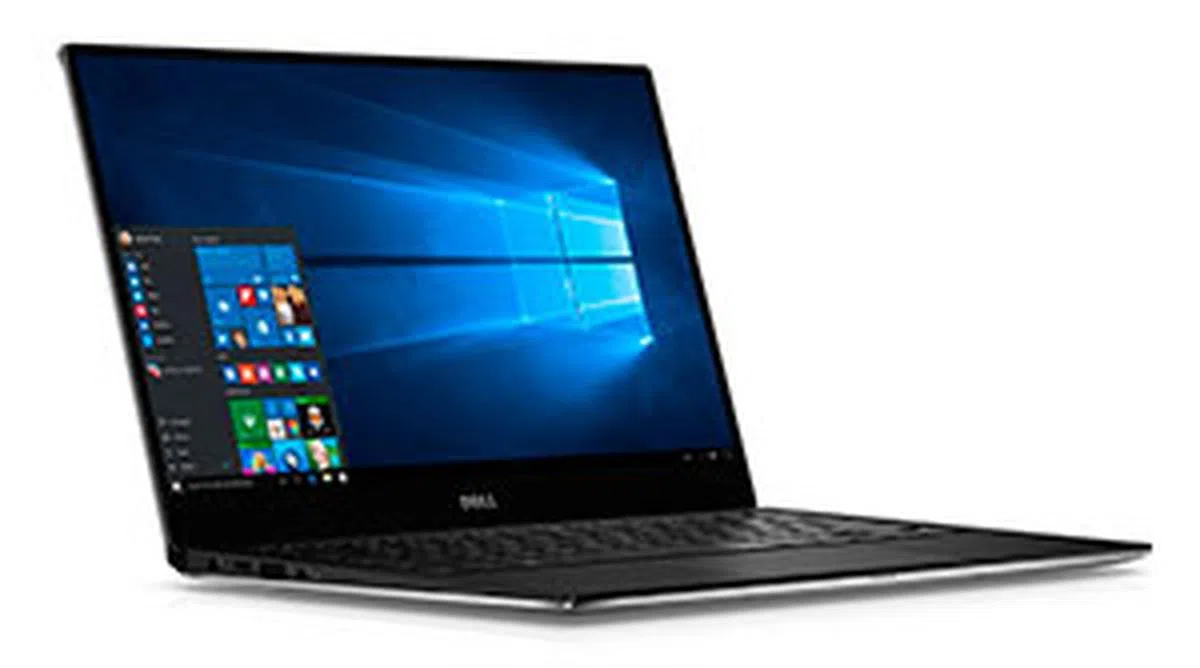 | |
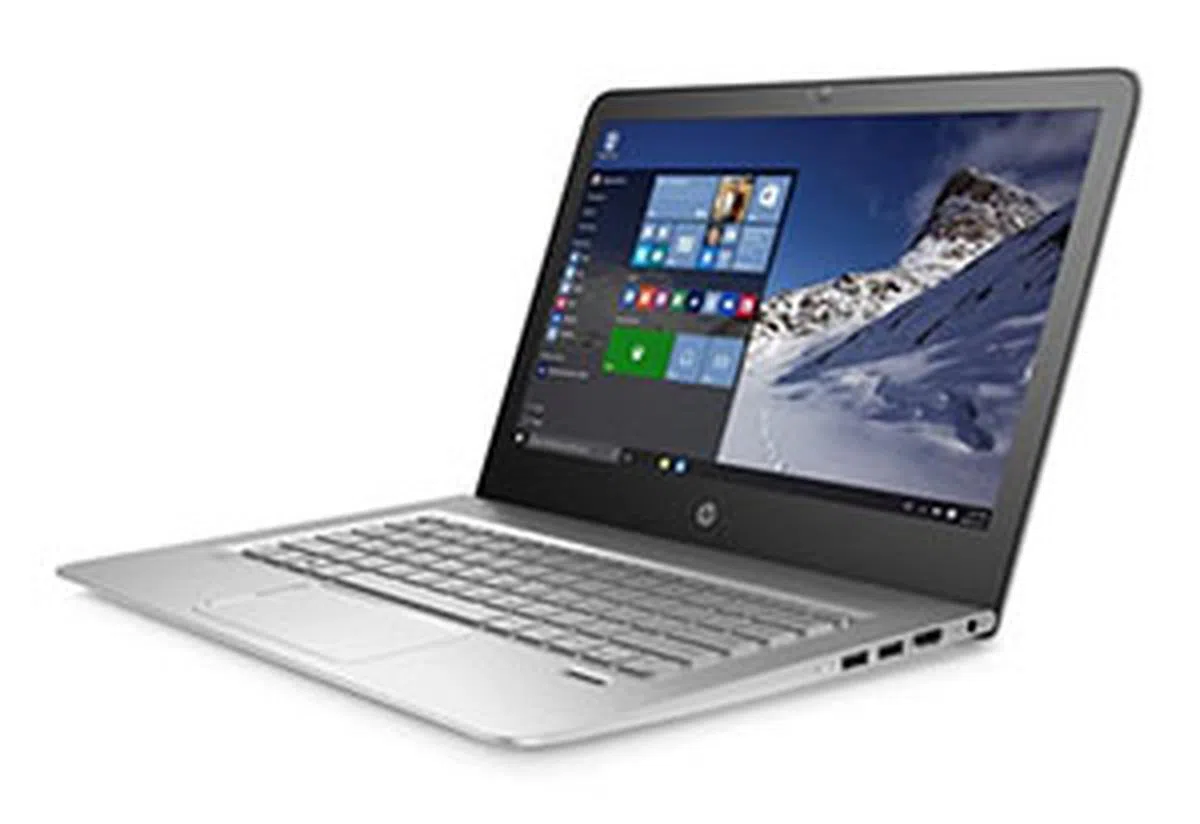 | |
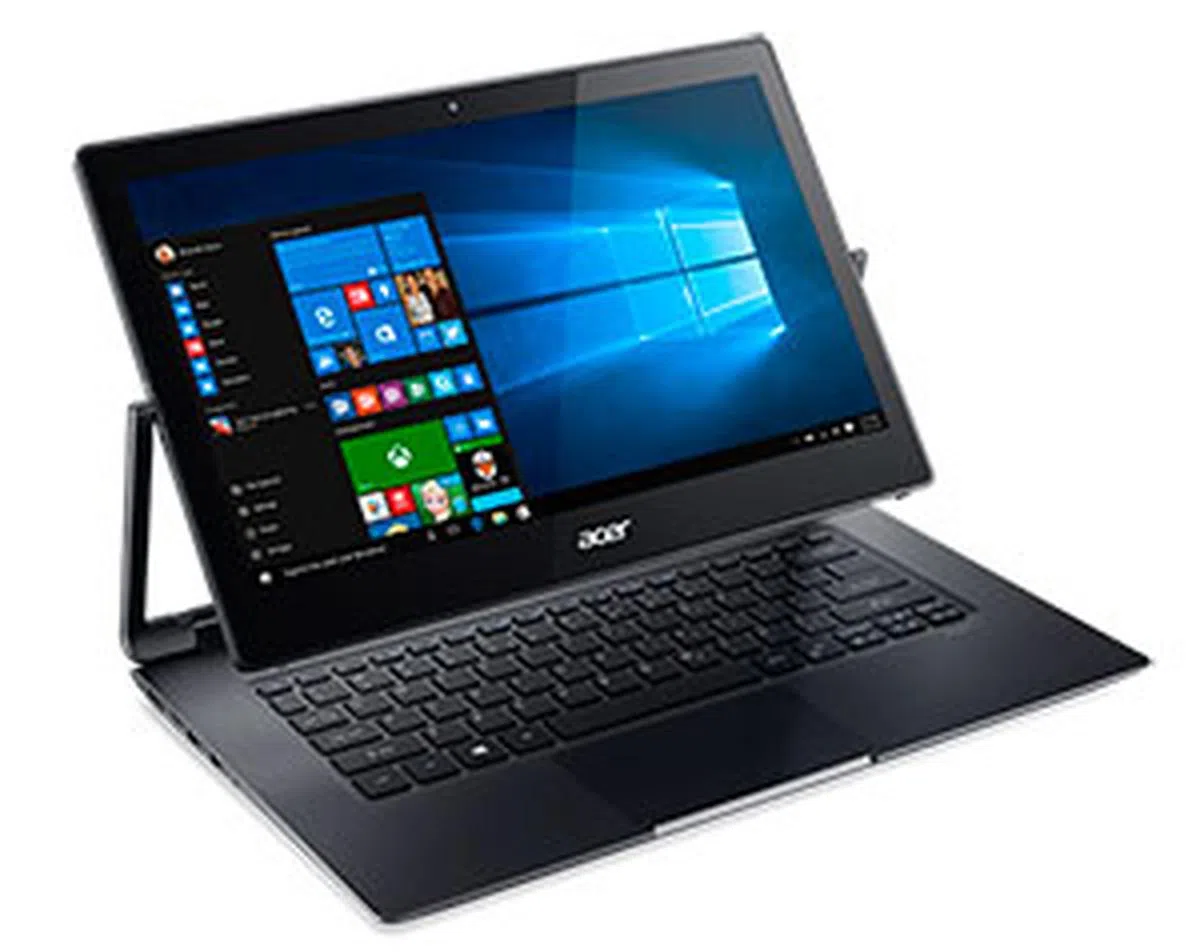 | |
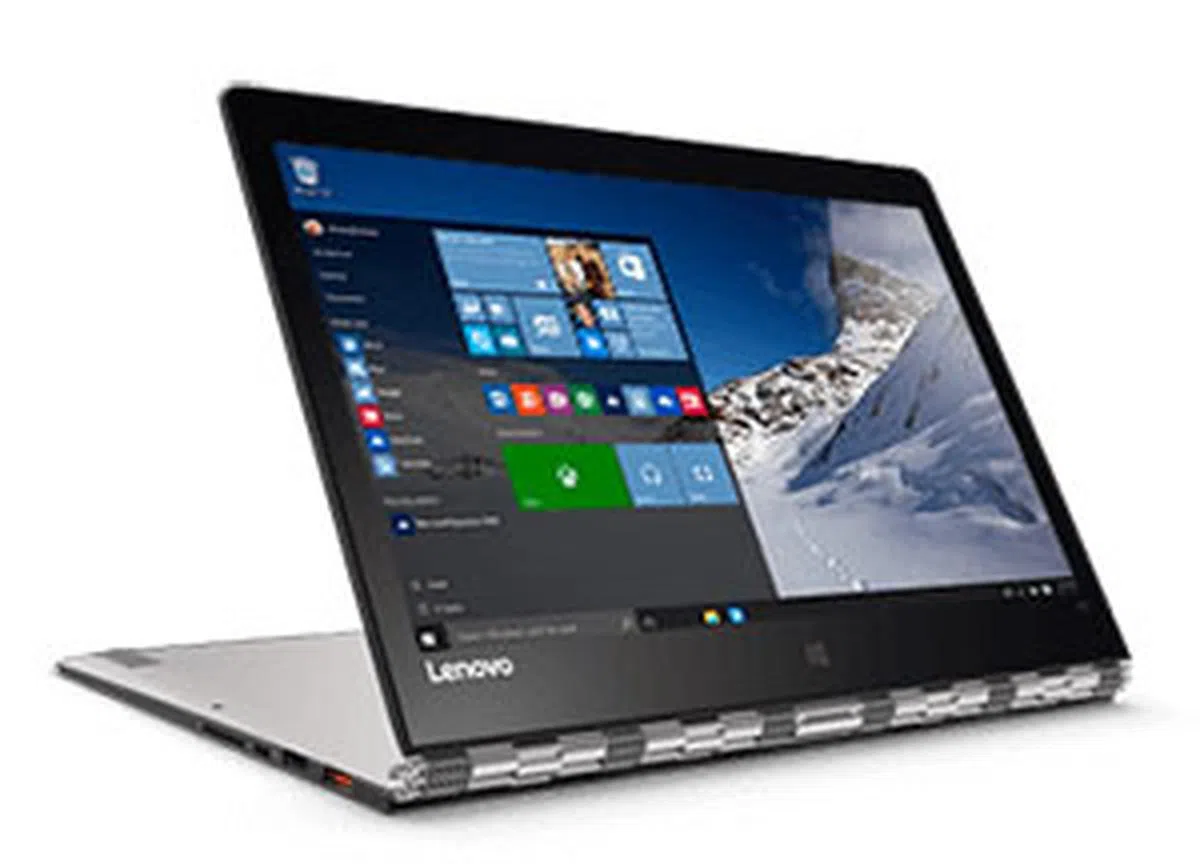 | |
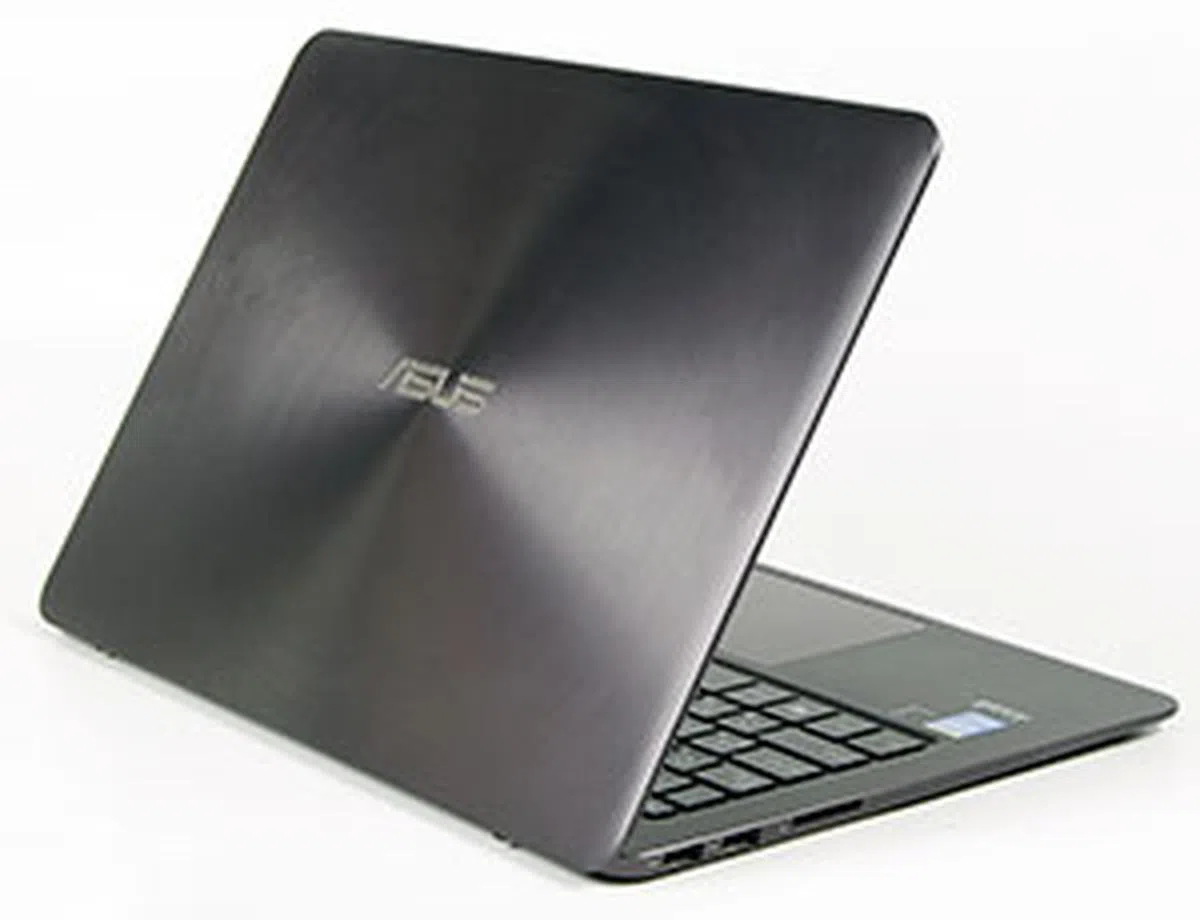 |


